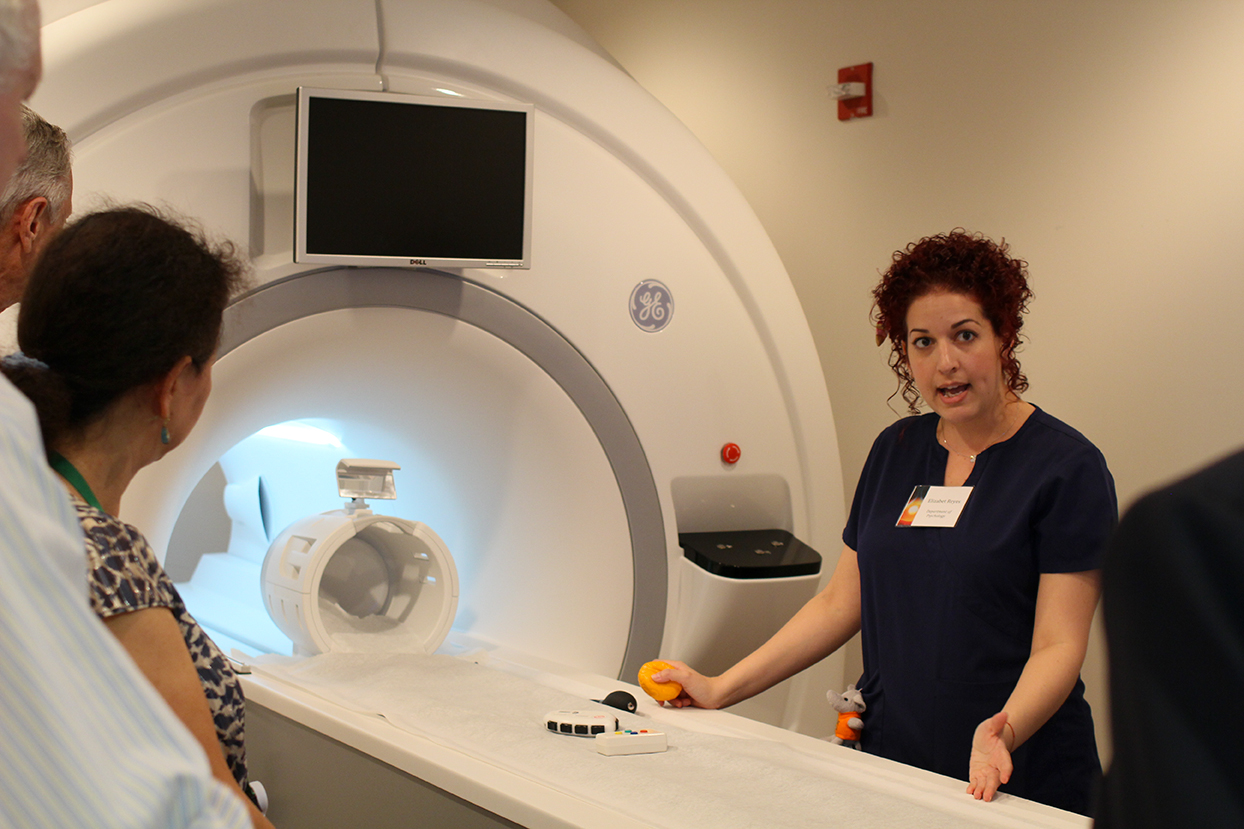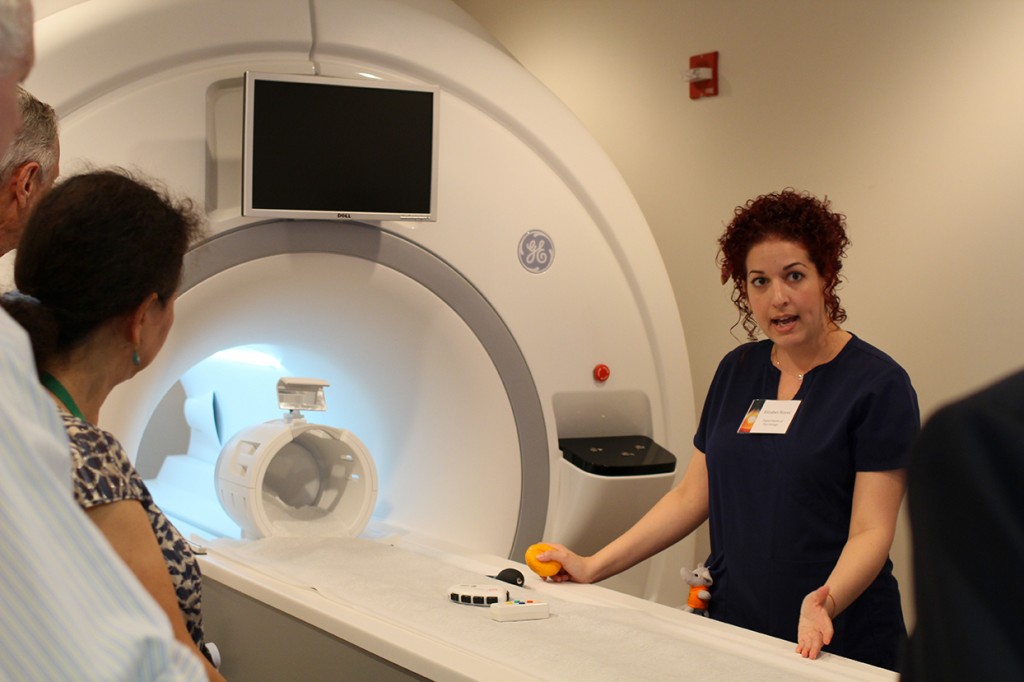

More than $300 million is spent annually on research expenditures at the University of Miami, and the neuroscience building on the Coral Gables campus acts as a physical reminder of the varied research happening at the school.
On Friday, University of Miami students, alumni, faculty and donors were welcomed to the neuroscience building, adjacent to the Cox Science Center, for an open house to learn about the research happening at the school. The three-story research facility opened in 2013 after a $14.8 million grant from the American Recovery and Reinvestment Act was awarded by the National Institutes of Health. The psychology department has received over 20 million in external research dollars this year, much of which is neuroscience-based, according to Dr. Michael Alessandri, assistant chairman of the psychology department and executive director of the UM Center for Autism and Related Disabilities.
“What’s happening here is cutting edge, innovative research in various psychological disorders and issues of attention and memory, many different topics,” Alessandri said. “We thought this was the right time to bring the community in and share what we’re doing with the public.”
Dr. Fred Pattany, the MR physicist and an associate professor in the radiology department, aims to learn how people with anxiety can overcome mental deficits through training.
“In this [MRI] scanner we do primarily structural images and functional images … Structurally, we look at the white matter connectivity in the brain … We also do functional imaging. We look at which areas of the brain are active during a certain disorder and we compare that to normal controls,” he said. “Whether it’s anxiety or ADHD, you get different pathways of the brain that are active compared to a normal subject. Then we say structurally how those active areas are interconnected differently than subjects that have some cognitive deficit compared to a normal control.”
Dr. Lucina Uddin, director of the Brain Connectivity and Cognition Laboratory and assistant professor in the department of psychology, received a grant for $2 million over five years from the National Institute of Mental Health to investigate flexible behaviors and their brain basis.
“We have a 3 Tesla magnetic resonance imaging facility which allows us to take images of the brain … so we can look at the structure and function of a patient’s brain,” Uddin said. “What we are particularly interested in here is looking at children who have autism … We try to characterize exactly what’s going on in terms of their brain connections that differ from a typical child and how that relates to the behavioral difficulties that they have day to day.”
The biology department also takes advantage of the research technology at the facility, using imaging technology to study the biological processes of life.
“We started off with a weird question … and now we’re chasing a bigger, broader story that we’re very excited about,” said Dr. James Baker, a research assistant professor and manager of the imaging core facility in the building. “We wondered how it was that the respiratory system of these [larvae] becomes filled with a gas, which has kind of a mysterious origin. The gas seems to come from within the animal and not from the atmosphere … we decided to test it … and along the way, it improved our understanding of this whole respiratory structure inside the animal. We’re now thinking that there are common underlying mechanisms for [activating] the respiratory spaces of both humans and flies, and we’re trying to understand a little bit more detail about how this works.”
The facility also houses tools for physics research. Associate professor in the department Dr. Mason Klein looks at how animals react physically to different stimuli.
“How does sensory input lead to behavioral output? Well, fundamentally, an animal, just like any other physical system, operates via an input, something happening, and then a corresponding output. So an animal will perceive some kind of stimulus … its brain will take that information and process it, and that will lead to some kind of muscle action.”





